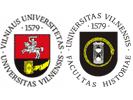On the 21st of January 1217, st. Dominic Guzmįn and his order were given the bulla “Gratiarum omnium” from the Pope, Honorius III (1216–1227), which approved their idea of preaching and spreading Gospel; thus they became independent from the bishops because they received their traditional regulations in that field. The document permitted the Dominicans the pastoral activity in all dioceses without the duty of requesting the bishops for the permission, which had been practised formerly. While describing the Dominicans pastoral work, the medieval Canon Law should also be referred to since there appeared the term “cura animarum ordinaria”. It was connected with the parish church exclusively and resulted from the parish law granted by a bishop. The rule concerning the mentioned law stated that every member of a parish should have his own assigned priest called “sacerdos proprius” and “parochus” or instead the priest’s assistant. Their authority concerned the following important services: baptism, marriages, funerals, confessions and administration of other sacraments, and both conduction of Sunday and other church holiday ceremonies. It could be stated that until the coming into existence of mendicate orders within borders of a parish, the clergy had a monopoly on the cult and pastoral work. Moreover, the mentioned above public religious services came under the rule of parish obligation (“cultus publicus”) and were to be received only in the parish church. Since “cultus privatus” had a tendency to growth in towns and the parish priests were unable to administer their duties completely, thus the Dominicans took over in this field. “Cura animarum extraordinaria” which was led by them functioned together with “cura animarum ordinaria”. During the development of individual cult there began a gradual exclusion of the majority of elements, which so far belonged to “cultus publicus”, out of parish obligation (“cura animarum ordinaria”) to include them in “cura animarum extraordinaria”. Then the Dominican orders became quasi-parish places of cult and the pastoral work in general was to be administered by both clergymen and monks as if on the double track. It often caused sharp disagreements between priests supported by bishops and mendicate orders. The popes’ attitudes towards the entitlement of pastoral activity led by mendicate orders differed. Innocent IV (1243–1254) supported the lay clergymen strongly. Alexander IV (1254–1261), Martin IV (1281–1285) and Benedict XI (1303–1304) were on mendicate orders’ side. Boniface VIII (1294–1303), however, supported the idea of compromise. The Pope, Clement V (1305–1314), regulated the situation at the Council in Vienne (1311–1312) deriving from regulations of bulla “Super cathedram” by Boniface VIII that was released on the 18th of February 1300.
In the “Dudum” constitution from 1312 he established, with fundamental recognition of free pastoral activity for mendicate orders, regulations to the advantage of parish “cura animarum” (e.g. mendicate orders were obliged to pay the parish priest a charge which was a sort of compensation). Although the decisions of the Council did not prevent the further conflicts completely, they were a crucial point in the development of pastoral relations and at the same time a turning point in their organization until the Trident Council (1545–1563). They caused a partial crisis of the parish monopoly in the field of pastoral work. |


 dizainas ir programavimas giriaus
dizainas ir programavimas giriaus  dizainas ir programavimas giriaus
dizainas ir programavimas giriaus